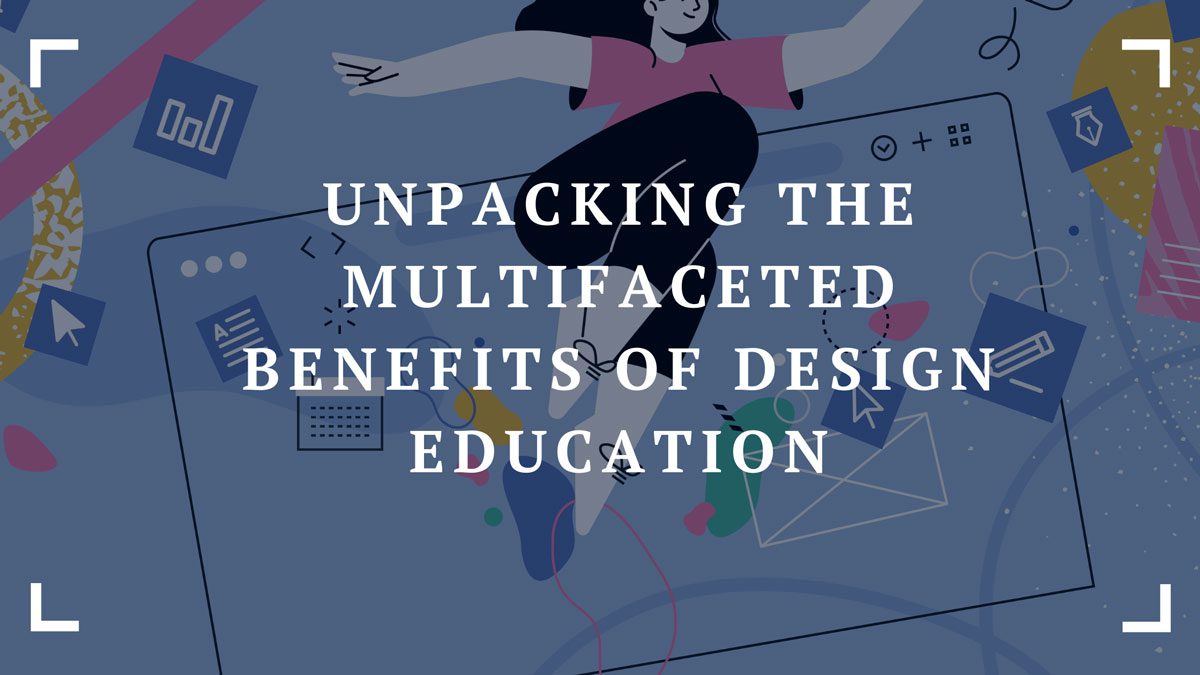Design education is the process of learning the principles and techniques of design. It is the training for future designers to develop their skills, creativity, and problem-solving abilities. Design education is essential because it teaches students how to think critically yet imaginatively, communicate effectively, be confident in their beliefs, and develop innovative solutions that can change how we view the world. So let’s have a closer look at the importance of design education in modern society and why it matters. Here are the top five benefits of getting an education in design.

Creative approaches
Designers are rather made than born. Students need to undergo serious creativity lessons and challenges to reveal their potential. Hence, such formal training helps students approach creative tasks, find their unique approaches, and come up with innovative solutions. Professional education should also teach students how to gain different perspectives when looking at a single problem.
All these skills are absolutely essential for succeeding in the professional world. Today, the world is changing so rapidly and continuously, forcing designers to keep up and adjust their creative visions and skillful approaches to the ever-changing demands. Plus, with so much competition and changes happening around us, thinking outside the box and generating new and exciting ideas is essential.
Teamwork and communication
Design is rarely a solo job. Most likely, these specialists will spend a career cooperating, collaborating, and working with other people. Designers have to be good communicators to understand their clients’ needs, express their professional opinions, and share a project with other professionals. Design education can teach students how to manage such effective communication.
During classes, students should learn how to express and support their opinions, be concise and effective with their choice of words, and communicate with teammates on projects. These skills come as a traditional part of any design training. Hence, students receive close to real-life practice in communication, leadership, and self-expression.
In addition, the school teaches us a lot about teamwork and collaboration. Students often have to complete group projects, sometimes with randomly assigned peers. Hence, they learn to communicate with each other, listen to other ideas and work together to achieve best results. Effective work often comes as the result of utilizing everyone’s potential and strongest skills.
Hence, learning to receive feedback and criticism, respect the opinions of others, and express your ideas is part of the education journey. This type of teamwork is crucial in today’s world, where projects often involve people from different backgrounds and disciplines.
Problem-solving
Another benefit of design education is that it teaches students how to solve complex problems. Designers are trained to identify problems and provide solutions that are both practical and aesthetically pleasing. They are taught to consider all aspects of a problem, from the user experience to the manufacturing process.
This type of thinking is critical in today’s world, where problems are complex and interfere with many areas, such as functionality, beauty, originality, etc. All these issues require creative solutions, strong skills, and problem-solving abilities. School helps students build those skills in a safe environment where they can learn and make mistakes.
Fortunately, students can also solve some problems with WritePaperForMe. Sometimes, students just don’t have the needed time or skills to complete all their projects at the highest level. That’s when professionals are called into action.
Student privileges
There are many benefits to being a student. First, such a title allows you to make mistakes. Being a student is all about trying, experimenting, and learning. Young people should feel free to fail and try again since learning is literally their main job.
Also, being a student means you have mentors and teachers. It means having more experienced professionals in the field who help you get better at what you do. Students are lucky to enjoy such help and involvement from higher specialists. Workplaces rarely provide entry-level specialists with as much care, attention, and mentoring as students receive in classrooms every day.
Lastly, students get to enjoy various programs and scholarships designed for young learners. Hence, education in design can also lead to travel or internship opportunities, more advanced educational programs, contests, etc., available only for formal learners.
Learning skills
Finally, design education is essential because it teaches students how to be good learners. Today, technologies, trends, and market demands change with unpredictable speed. Hence, as with any other profession in IT or arts, it will require non-stop, lifelong learning from each professional.
Designers must be ready to take additional courses, master new software and programs, adjust their working styles to new technologies, etc. Of course, it all requires certain learning skills and readiness to receive new knowledge. School teaches young people to adapt to new circumstances, make learning plans, practice different learning methods, etc. Hence, it is a great practice for their future life of professional learning.
Bottom line
Modern society relies on design in so many ways. It is more than an artistic or creative expression. Design is also about function, comfort, and connection. Hence, we do need more design students who will effectively learn how to solve complex problems, create working solutions, and improve today’s world.
Meanwhile, formal design education helps students to build greater confidence in their skills, provides them with numerous lessons and tactics, teaches them teamwork and collaboration, and encourages them to be life-long learners. Thus, education prepares young people for work in a professional environment, as well as future challenges and opportunities in their careers.


